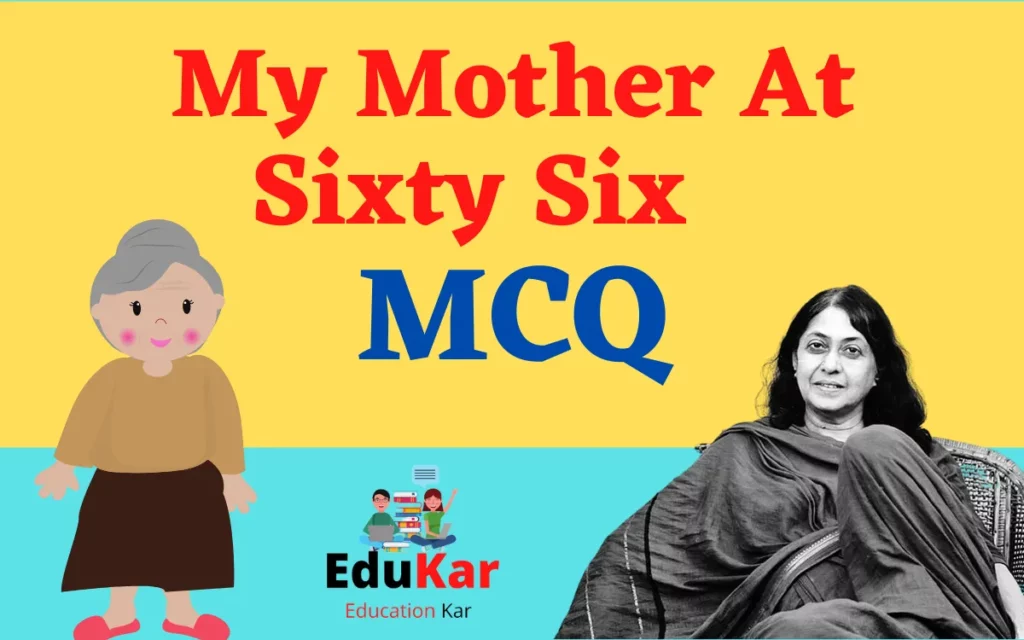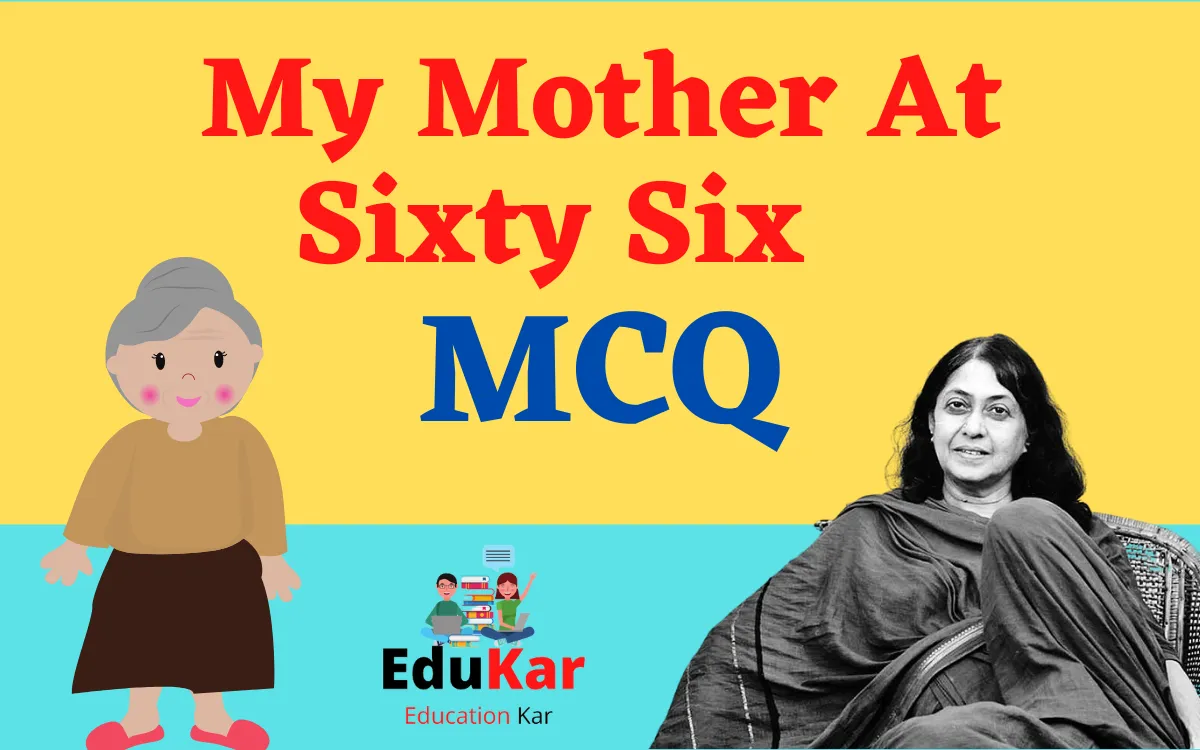
My Mother At Sixty Six-MCQ
Q1 : Who is the author of this poem?
(a) William Wordsworth
(b) John Keats
(c) Rudyard Kipling
(d) Kamala Das
Answer: Kamala Das
Q2 : What is her work known for?
(a) For popularity
(b) For the expressions used
(c) For its originality, versatility and flavor of the soil
(d) For its style
Answer: For its originality, versatility and flavor of the soil
Q3 : In which of these languages has kamala Das written stories and novels?
(a) English and Malayalam
(b) English and Tamil
(c) English and Urdu
(d) English and Hindi
Answer: English and Malayalam
Q4 : What is the kind of ache & pain that the author feels?
(a) Children screaming at her
(b) Headache
(c) Losing her mother
(d) Heart attack
Answer: Losing her mother
Q5 : Identify the poem’s poetic devices.
(a) Alliteration
(b) Metaphor
(c) Simile
(d) All of these
Answer: All of these
Q6 : Which poetic device is ‘Trees sprinting’?
(a) Personification
(b) Simile
(c) Metaphor
(d) Alliteration
Answer: Personification
Q7 : What is the significance of the title My Mother at sixty-six?
(a) Poet’s fear of moving fast
(b) 66th birthday celebration of poet’s mother
(c) Poet’s aging mother
(d) All of these
Answer: Poet’s aging mother
Q8 : Whose house was the poet leaving?
(a) Her own house
(b) Her husband’s
(c) Parent’s house
(d) In-law’s
Answer: Parent’s house
Q9 : What is the poem’s major idea?
(a) Lack of strength
(b) Painful old age
(c) Carelessness of a daughter
(d) Discoloration of skin
Answer: Painful old age
Q10 : What was the expression of the poet’s face while parting from her mother?
(a) Smiling
(b) Sad
(c) Crying
(d) She was expressionless
Answer: Smiling
Q11 : What did the author realize with pain?
(a) Old age is pleasant
(b) Her mother’s appearance like a corpse
(c) Her mother is happy
(d) Her mother must visit a dermatologist
Answer: Her mother’s appearance like a corpse
Q12 : What is the familiar ache?
(a) Her Duties
(b) Her early anxiety about losing her mother
(c) Her helplessness
(d) Her mother’s weak health
Answer: Her early anxiety about losing her mother
Q13 : What do the running trees signify?
(a) Speed moving appearance
(b) From childhood until old age, human life is undergoing rapid transformation.
(c) Fast moving appearance
(d) None
Answer: From childhood until old age, human life is undergoing rapid transformation.
Q14 : Which of these is an instance of repetition used in the poem?
(a) Amma
(b) Fear
(c) Smile
(d) None of these
Answer: Smile
Q15 : What does ‘ashen face’ signify?
(a) To show ugly face
(b) Color of face
(c) Face covered with ash
(d) Lifeless & pale face of poet’s mother
Answer: Lifeless & pale face of poet’s mother
Q16 : What do the parting words “see you soon Amma” signify?
(a) She is in a hurry
(b) Her carelessness
(c) She bids goodbye like this
(d) Her optimistic farewell full of cheerfulness
Answer: Her optimistic farewell full of cheerfulness
Q17 : What does the author notice outside the car?
(a) Other vechicles
(b) Sprinting trees and running children
(c) Schools and roads
(d) Many people on the road
Answer: Sprinting trees and running children
Q18 : What does the author smile signify in the poem?
(a) She has to do her duty 1st
(b) Her assurance to her mother and helplessness inside
(c) She is a loving daughter
(d) She had a responsibility
Answer: Her assurance to her mother and helplessness inside
Q19 : What is the poem’s theme, and how universal is it?
(a) To show old age
(b) Death is a truth
(c) Everyone is happy
(d) Life is a reality
Answer: Death is a truth
Q20 : Quote an example of a simile used in the poem?
(a) Like that of a corpse
(b) The merry children
(c) Familiar ache
(d) Wan and pale
Answer: Like that of a corpse





